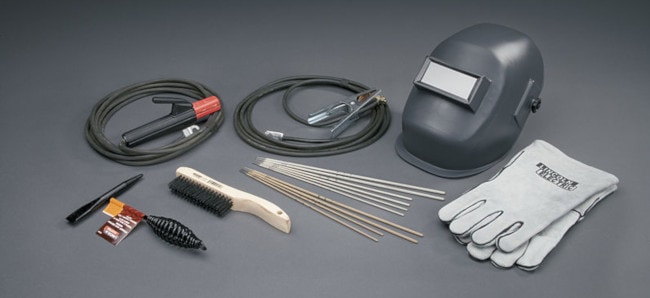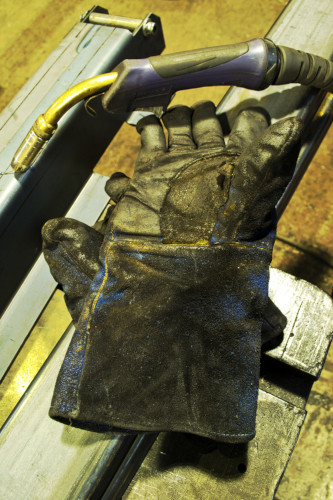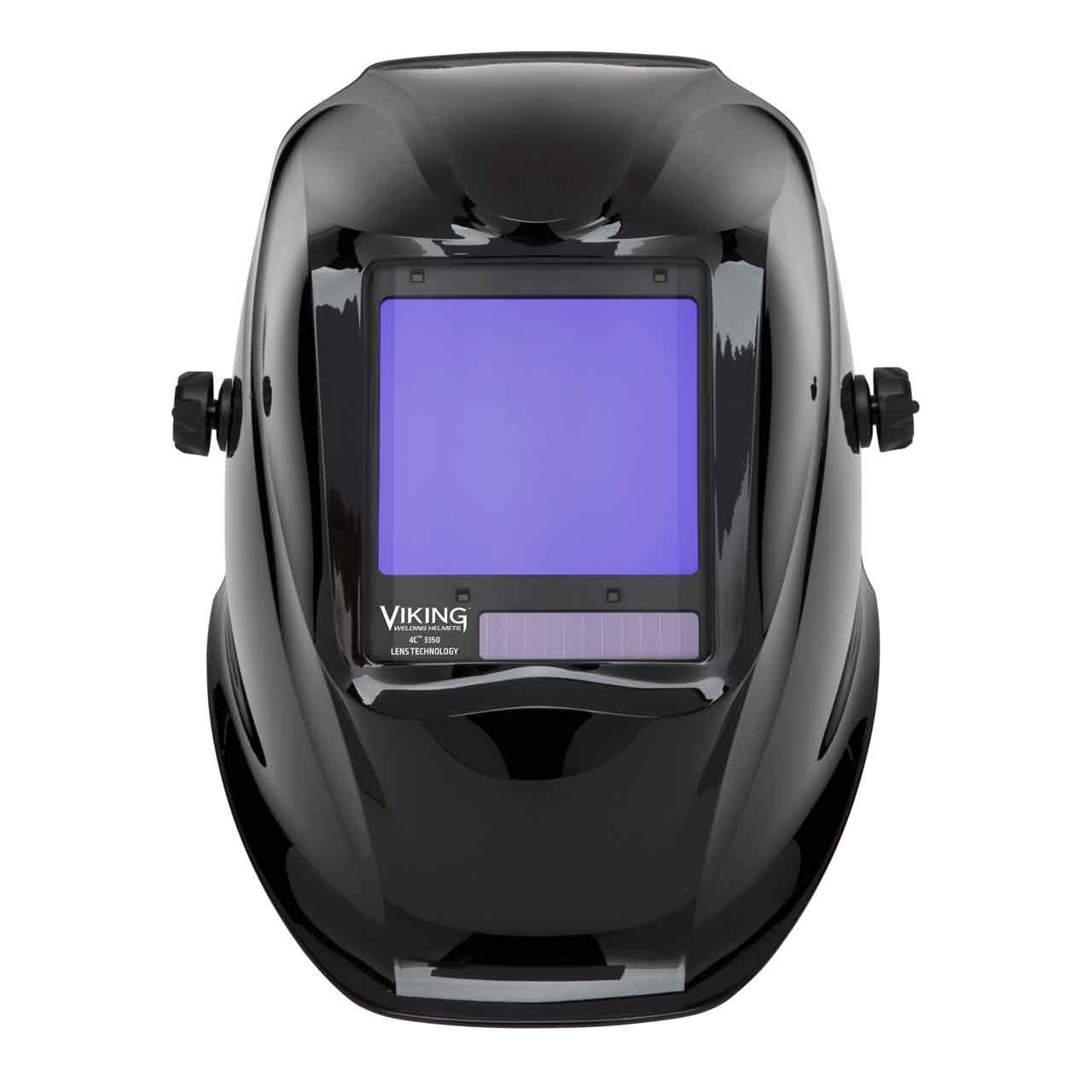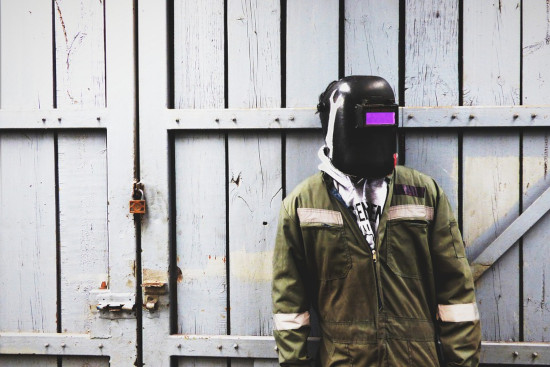Welding Safety Equipment Checklist: 7 Items You MUST Use
Last Updated on

When it comes to PPE (personal protective equipment), welders are sort of known for being the most strict. You need your goggles, your vest, and a host of other things just to get started with your first piece.
Here, you can find a quick and easy checklist that will prevent possible injury.
The Welding Safety Equipment Checklist:
1. Welding Gloves
I can’t tell you how many times I’ve seen guys out there working bare-handed. One of my close family members got a nasty burn from slag that dripped down onto his thumb. The medical costs just aren’t worth it. Especially since it’s preventable.
Your gloves should do a few things, like:
- Be insulated and heat resistant
- Cover your hands and wrists completely
- Fit over or under your jacket’s arm cuff
- Be easy and comfortable to move in
There are gloves marketed directly toward welders. Generally, those will cover all your needs. But be very selective. Gloves are really something no one can afford to skip.

2. Helmet With Eye Protection
The biggest thing you’ll need here is some face protection. Your face the prettiest thing on you, and you definitely don’t want to damage it. On your face are your very important eyes; you’ll need some protection there as well.
A helmet kills two birds with one stone, protecting your eyes and face from:
- Hot Slag
- Sparks
- Horribly blinding light
- Debris
- Radiation
All of these things are real dangers to anyone doing welding work. It’s pretty easy to miss seeing a quick spark and have debris burst at you. It’s really difficult to maneuver when you are so connected to the work that you do. So be careful and never skip this step.
Make sure to get the proper eye protection class. You can find an explanation of the classes linked in the sources. Also, pick something that fits well. You want a helmet that’s snug and doesn’t wiggle at all.
Automatically dimming welding helmets exist, but they tend to be a bit costly. If you can afford it, then go ahead and mark it off this checklist.

3. Heat Resistant Welder’s Jacket
Another really big one—I guess that’s why it made the checklist.
You won’t regret getting yourself a nice heat resistant jacket. It saves your skin and clothing from heat and sparks that come with the work. Jackets like these also make you look stylish and mysterious, which is also a big bonus.
Look for something that seems sturdy and that won’t catch fire. Leather or flame-retardant jackets will do. Make sure to tape or clamp your pockets shut while working. Anything that leaps into your pocket is difficult to remove and very dangerous.
Ensure that the jacket fits your arm length and torso length before you purchase it. The ends of the coat tend to get in the way if you need to squat or bend over for a job.

4. Welding Pants (No cuff)
Your pants should have no cuff at the end of the leg hole. It’s possible for burning debris to get caught on it.
Look for pants that pair well with your choice of shoe. By that, I mean the pant leg should fit over the shoe ankle support with no issue. I prefer to have at least 2 inches of overlap.
Burning hot slag is no joke. It’s hot and awful, and it’s the last thing you want near any exposed skin. Picking a nice pair or fire-resistant pants is pretty easy. Finding cuffless pants is a bit more difficult.
If you already have a pair of fire-resistant pants, just unhem the cuff at the bottom. That should solve the problem in a jiffy.
5. Welding Respirator or Lung protection
Most welders I’ve seen don’t use this at the beginning of their careers. As soon as they see someone pass out they tend to start using one. Most gases are invisible; they can penetrate your lungs and cause long term damage.
Most of the time, you won’t need the full mask. There are smaller, more compact things you can use. When ventilation is limited, however, be sure to use the full mask. Your lungs will thank you for it.
In largely ventilated areas, like outside, you can use something simpler, like a dusk mask.
6. Ear Muff or Plugs
Ear protection is important not only for your hearing, but just in case any debris or sparks fly off. Those little hazards could easily land themselves in places that are very inconvenient.
I recommend full cover ear protection. Also, ensure they are fireproof. Don’t use winter ear muffs made up blended synthetics. Synthetic materials tend to burn fast and vigorously.
You can opt for something smaller, like earplugs. For the purposes of this checklist, however, use full cover ear protection.
7. Welding Work Boots
When welding, you could be working with an open flame or a live current. It’s important to ground yourself to protect yourself from electric shock or burns. Your shoes should meet the following requirements:
- Rubber Soled
- Steel plate above the sole
- Cover past the ankle (6 – 8 inches is best)
- Flame retardant
- Sturdy (made of leather or something similar)
- Slip-resistant
If you’ve hit all these points with your current pair, that’s great! If not, I recommend searching for what’s called a pair of welding work boots.
If you don’t wear proper shoes you’ll be putting yourself at risk. You are vulnerable to:
- Electric Shock
- Nails or sharp objects penetrating the sole of your shoe
- Burns
- Slips or falls
These are just a few of the possible hazards. It’s super important to have a great pair of shoes on your feet when welding.
Final Thoughts
All of these things are absolutely necessary when welding. Safety is the number one concern when doing a dangerous job.
- Insulated/Welding Gloves
- Helmet With Eye Protection
- Heat Resistant Jacket
- Pants (No cuff)
- Respirator or Lung protection
- Ear Muff or Plugs
- Rubber Soled Shoes
There are more specific items that you might be required to use by your company or employer. Rest assured that it’s all for your safety and the people around you.
Sources used:
https://www.ccohs.ca/oshanswers/safety_haz/welding/ppe.html
Header image credit: Mgschuler, Wikimedia
